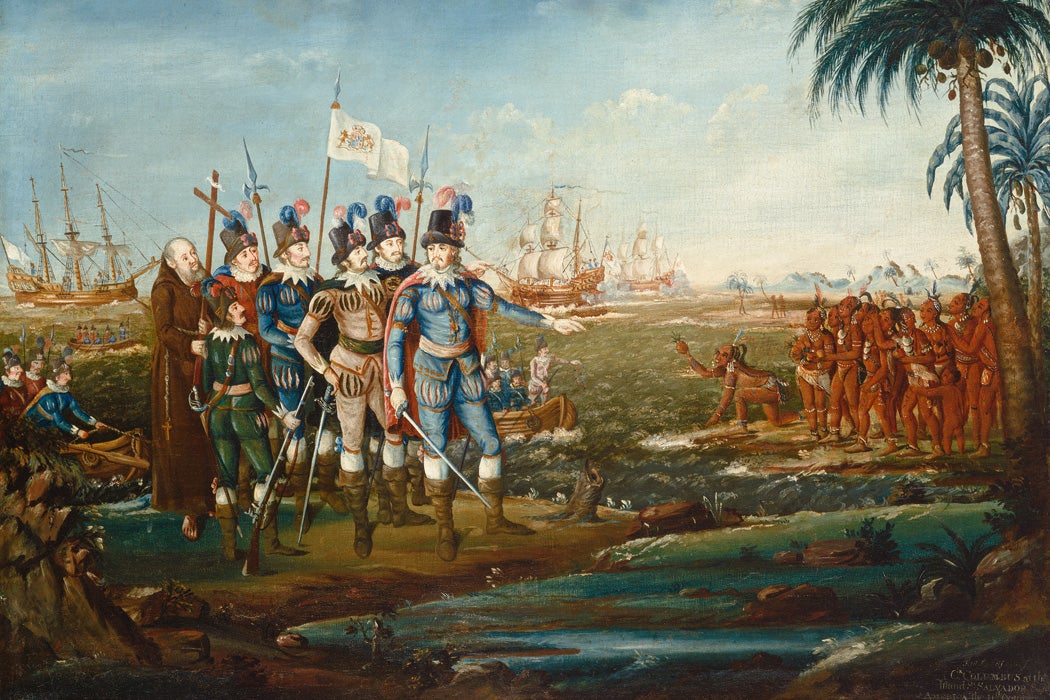The Columbian Exchange of “diseases, food, and ideas” between Old and New Worlds, which followed Columbus’ 1492 voyage, was, perhaps unsurprisingly, not at all equitable. In fact, a better name for it might be the Columbian Extraction. The centuries following Columbus’s discovery of the New World for Spain remade the entire socioeconomic world.
First Spain, then Portugal, France, England, and Holland, established colonies in the Americas. Millions of inhabitants of the New World got very much the worst of the imposition of conquest and foreign rule. The Old World, though, could not believe its good fortune. The exchange rate was very much in their favor. There was all the gold and silver wrenched from the Americas, which funded European empires and the leap into the early modern period. More mundane, but perhaps more influential in the long run, there was all that amazing food. Europeans were eager to absorb the starches and flavors pioneered by the indigenous peoples of the western hemisphere.
The economists Nathan Nunn and Nancy Qian explore this epochal exchange, stressing that “Old World” means the entire Eastern Hemisphere: Asia and Africa were also transformed by the European “discovery” of the Americas. Just look at what the world eats today, centuries later. Staple crops from the New World, like potatoes, sweet potatoes, maize, and cassava continue to be of vital importance around the globe. And, they write, other, less calorie-intensive additions to the world palate from the New World have reshaped national cuisines around the globe:
Namely Italy, Greece, and other Mediterranean countries (tomatoes), India and Korea (chili peppers), Hungary (paprika, made from chili peppers), and Malaysia and Thailand (chili peppers, peanuts, and pineapples).
Then, of course, there’s chocolate. Not to mention vanilla, a fermented bean which has become “so widespread and so common that in English its name is used as an adjective to refer to anything that is ‘plain, ordinary, or conventional.'”
Less benign New World products also conquered the globe, including coca and tobacco. The former is the source of cocaine (and, a barely kept secret, one of the original ingredients of Coca-Cola). Tobacco, write Nunn and Qian, was “so universally adopted that it came to be used as a substitute for currency in many parts of the world.” Today, tobacco is the world’s leading cause of preventable death.
“The exchange also drastically increased the availability of many Old World crops,” Nunn and Qian continue, “such as sugar and coffee, which were well-suited for the soils of the New World.” Before Columbus, these were products for elites. Slave production in the New World ironically democratized them in the Old. Rubber and quinine offer two other examples of New World products that fueled European empire.
Stuffed with sugar and potatoes, the New World’s calorie-and-nutrient powerhouses, Europe experienced a population boom in the centuries following Contact. But the Americas suffered a massive population crash: up to 95% of the native population was lost in the century and a half after 1492. As an example, Nunn and Qian note that “central Mexico’s population fell from just under 15 million in 1519 to approximately 1.5 million a century later.”
That terrible toll was mainly due to disease. It’s true that the Old World got syphilis, but only in return for the smallpox, measles, influenza, whooping cough, chicken pox, diphtheria, cholera, scarlet fever, bubonic plague, typhus, and malaria transported to the New. While ghastly, syphilis was nowhere as destructive, even before it was tamed with penicillin.
Weekly Newsletter
The resulting dearth of population in the Americas sparked a desperate need for labor among colonial extractors. Over 12 million Africans would be forced to the Americas between the sixteenth and nineteenth centuries. That population transfer echoes in everything, from the 1619 Project to Brazil’s convoluted racial politics.
Half a millennium after Columbus, this re-made world is all we know. The food transfer has been so normalized that many have forgotten the origins of what they’re eating. Today, the top ten potato-consuming countries in the world are all in Europe. No New World country even makes the list of the top ten potato-producing counties. And the top ten cassava-consuming countries are all in Africa, where the starchy tuber is a staple. And the only New World country in the top ten tomato-consuming counties is Cuba. The list could go on. The whole world now eats the fruits of the amazing biodiversity of the New World, with hardly any credit to the original cultivators.







